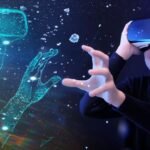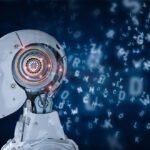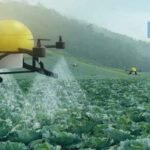Interview Mrs.Anita Schjøll Brede
Interviewer: Good day, everyone. Today, we have the privilege of sitting down with Anita Schjøll Brede, a pioneering figure in the field of artificial intelligence and technology. Anita is the CEO and Co-founder of Iris.ai, a company that specializes in AI-powered tools for research and innovation. Thank you, Anita, for joining us. To start off, could you share a bit about your journey and what led you to the world of AI and innovation?
Anita Schjøll Brede: Thank you for having me. My journey into the world of AI and innovation began with my passion for solving complex problems. I come from a background in computer science and neuroinformatics, and during my studies, I realized the immense potential of AI in transforming the way we approach research and innovation. The sheer volume of scientific literature available and the challenges researchers face in navigating it motivated me to create Iris.ai. Our goal was to develop AI tools that could accelerate the research process and help scientists discover relevant insights more efficiently.
Interviewer: That’s fascinating, Anita. Iris.ai indeed addresses a critical need in the research community. Could you elaborate on how Iris.ai’s technology works and how it assists researchers and innovators in their work?
Anita Schjøll Brede: Certainly. Iris.ai’s technology is built on the principles of machine learning and natural language processing. At its core is our AI tool, the “AI-Engine,” which is trained to understand the context and relationships within scientific literature. Researchers can input their problem statements, and our AI-Engine then scours through vast amounts of research papers to identify relevant information, even beyond keyword matching. This helps researchers discover connections and insights they might have otherwise missed, ultimately accelerating the research process and fostering more innovative breakthroughs.
Interviewer: That sounds incredibly powerful. It’s clear that Iris.ai has the potential to revolutionize how we approach research. Could you share some real-world examples of how your technology has been applied and the impact it has had on various industries?
Anita Schjøll Brede: Absolutely. Iris.ai has been applied across a range of industries, from pharmaceuticals to energy, and even government agencies. For instance, in drug discovery, researchers have used our technology to rapidly identify potential drug candidates by analyzing existing research and patents. In the renewable energy sector, Iris.ai has helped experts access the latest advancements in technology and policy, facilitating the development of sustainable solutions. Government agencies have also utilized our tools to inform policy decisions by quickly comprehending and synthesizing large volumes of relevant literature. These examples showcase how Iris.ai is transforming industries by accelerating the pace of innovation and decision-making.
Interviewer: It’s impressive to see the breadth of impact Iris.ai has had across different sectors. As AI and technology continue to evolve, where do you see the future of AI-powered research and innovation heading, and how does Iris.ai plan to stay at the forefront of this evolution?
Anita Schjøll Brede: The future of AI-powered research and innovation is incredibly promising. AI will continue to enhance our ability to process and understand vast amounts of information, leading to more rapid and informed decision-making. At Iris.ai, we are committed to staying at the forefront of this evolution by continually improving our AI technology, expanding its capabilities, and refining its understanding of complex scientific context. We’re also focused on fostering a collaborative ecosystem where researchers, innovators, and AI can work seamlessly together, enabling the discovery of groundbreaking insights that can shape the future.
Interviewer: That sounds like an exciting and impactful vision for the future. Before we conclude, Anita, do you have any advice for aspiring entrepreneurs or individuals looking to make a meaningful impact in the field of AI and technology?
Anita Schjøll Brede: Absolutely. My advice would be to find a problem that truly resonates with you, one that you’re passionate about solving. AI and technology are powerful tools, but the real magic happens when they’re applied to address real-world challenges. Surround yourself with a diverse and talented team, and don’t be afraid to take risks and learn from failures. Embrace curiosity, continuous learning, and a willingness to adapt, because the world of AI and technology is ever-changing. Most importantly, stay focused on creating value and making a positive impact – that’s where the true potential of AI lies.
Interviewer: Wise words indeed, Anita. Thank you for sharing your insights and experiences with us today. It’s been a pleasure learning about Iris.ai and your journey in the world of AI and innovation. We look forward to witnessing the continued success and impact of your work.
Anita Schjøll Brede: Thank you for having me. It’s been a pleasure discussing our work at Iris.ai and the exciting possibilities that AI holds for the future of research and innovation. I’m grateful for the opportunity to share our story and inspire others to push the boundaries of what’s possible.


































